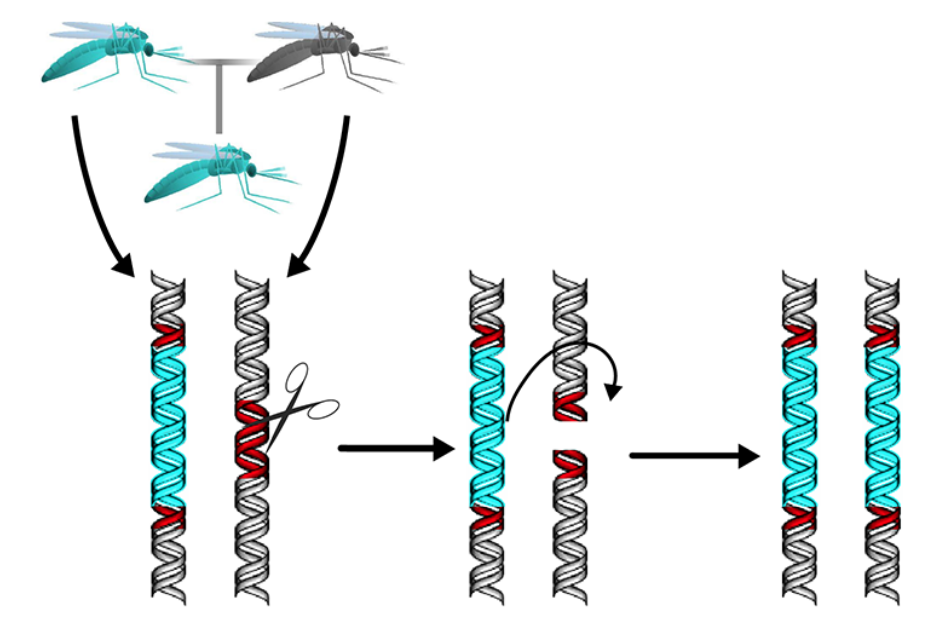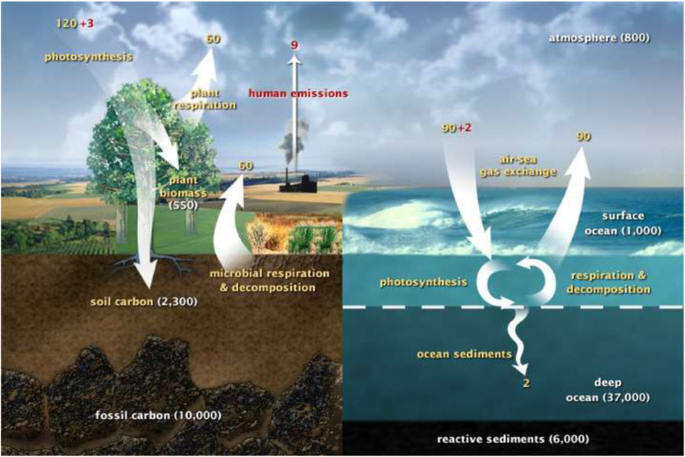Fake Meat
What ecological implications does this have? Fake meat is being developed in labs using stem cells from cows to grow meats that normally produce, which would release CO2 into the air as a result of being force-fed corn and soybeans. The amount of CO2 emissions would decrease severely if this process were to become the norm in the future. The effect on the agriculture industry and environment would be the existence of fewer aquatic dead zones. This is because the nutrient runoff from crops (nitrogen and phosphorus) would increase the amount of algae growth, take oxygen out of the water, and therefore decrease plant growth and decrease biodiversity.
cows to grow meats that normally produce, which would release CO2 into the air as a result of being force-fed corn and soybeans. The amount of CO2 emissions would decrease severely if this process were to become the norm in the future. The effect on the agriculture industry and environment would be the existence of fewer aquatic dead zones. This is because the nutrient runoff from crops (nitrogen and phosphorus) would increase the amount of algae growth, take oxygen out of the water, and therefore decrease plant growth and decrease biodiversity.
Pollinators
Each fall and spring, more than 25 million Americans are affected from the increase in pollen being released in the air. Reactions range from the common cold to developing more chronic illnesses such as asthma, eczema, and hives. But why does this yellow powder-like substance have such a large effect on humans? According to horticulturist Tom Ogren, male plants are responsible for the majority of pollen outputs as opposed to their female counterparts. The immediate response here would be to halt the planting of males and increase female planting, however, this itself would lead to a decrease in biodiversity because it would be more difficult for pollination to occur.
According to Johns Hopkins Medicine, people can be allergic to one type of pollen and not another. The protein in the human body that fights against allergens in the air is the immunoglobulin E (IgE) antibody. What if there was a way for humans to synthetically develop a version of this antibody (and the chemical first response – histamines) that would not produce the outcomes that we normally experience (stuffed nose, cough, sore throat, tearing eyes, etc.)? It would be revolutionary if antibodies can be synthetically grown from each individual’s stem cells to develop antibodies. This could be taken by humans in the form of a one-time pill or vaccine that is specific to the individual’s genetic makeup, leaving no room for side effects of allergies.

Gene Drives
Branching off of this, what would be the effects of scientists genetically engineering species – plants (for reasons mentioned above), and animals – on their external environments? This is already occurring in  agriculture where farmers are introducing gene drives, which are genetically engineered genes that canbe used to modify the habits of invasive species that can later be passed down to ultimately remove these species from crops. The use of CRISPR-Cas9 gene editing (by using individual bacteria taken from each subject), making this process significantly easier for scientists to perform. If bacteria/ genes can be taken from individuals of a certain species to be harvested to decrease the infestation of the whole of the invasive species, a possible negative outcome could be needing to re-populate native species that naturally prey on the crops.
agriculture where farmers are introducing gene drives, which are genetically engineered genes that canbe used to modify the habits of invasive species that can later be passed down to ultimately remove these species from crops. The use of CRISPR-Cas9 gene editing (by using individual bacteria taken from each subject), making this process significantly easier for scientists to perform. If bacteria/ genes can be taken from individuals of a certain species to be harvested to decrease the infestation of the whole of the invasive species, a possible negative outcome could be needing to re-populate native species that naturally prey on the crops.
Microbes and the Future of Pandemics
Microbes are living organisms that are all around humans, too small for the naked eye to see. A study done by Bio Med Central in Arctic ice sheets, shows viruses and bacterium are still active in these glaciers after 750,000 years, proving the point above. Examples of newfound bacteria found within glaciers include Proteobacteria, Actinobacteria, Firmicutes, and Bacteroidetes, all of which belong to the same phylum. While these bacteria is not new to humans – proteobacteria generally found in animal feces, actinobacteria found in soil, firmicutes found on human skin, and Bacteroidetes found in human intestines – because these bacteria belong to different genomes, there is a strong chance that there is a genetic variation of these bacteria that humans have not interacted with before. What if there is a way for humans to extract DNA from these microbes to create a synthetically grown antibody? This goes hand in hand with genetically engineering humans’ DNA to create immunity – something that can be passed down for future generations.
feces, actinobacteria found in soil, firmicutes found on human skin, and Bacteroidetes found in human intestines – because these bacteria belong to different genomes, there is a strong chance that there is a genetic variation of these bacteria that humans have not interacted with before. What if there is a way for humans to extract DNA from these microbes to create a synthetically grown antibody? This goes hand in hand with genetically engineering humans’ DNA to create immunity – something that can be passed down for future generations.
Questions to be posed include: What countries are going to be exposed to the never-before-seen microbes and to what extent? Are there specific countries as a whole that would suffer the most? Also, how would these new diseases spread? How can we prepare for every mode of contamination? How frequently would we expect new diseases to emerge? What is our first line of defense if they occur at the same time?
Climate Change
Systems and synthetic biology can be used to manage land and agriculture (genetically modifying invasive species). If agricultural workers used this method on a more widespread level—spanning from forests to cities—they would be able to alter the carbon cycle. Scientists would be able to take carbon dioxide molecules from highly concentrated areas and remove a portion or remove it altogether (if technology permits). This would create more “climate control” because it would cause a significant reduction (tens of hundreds of gigatons) of carbon from the atmosphere. On land, genetically modifying plants to reconstruct the photosynthesis process would aid with this altered carbon cycle process. For example, what occurs currently in the Calvin cycle is carbon fixation (attaching CO2 from the atmosphere to chemical RuBP to begin photosynthesis), the reduction phase (energy reacts with chemicals to create simple sugar G3P), carbohydrate formation, and the regeneration phase (energy and sugar combine to form molecule RuBP, allowing the cycle to be continuous).

To incorporate synthetic biology to accelerate this process or allow for it to happen on a larger scale (faster, more molecular conversions, etc.), C3 crops—barley, oats, rice, wheat, etc.— use only the Calvin Cycle to grow, would be expanded. Scientists would be able to take the genetic sequence that allows for photosynthesis to occur by just taking the CO2 from the atmosphere and transplanting this sequence into other plants. This would cause disruption because it would allow for increased efficiency in the photosynthesis cycle – something the current carbon levels desperately need to decrease on a large scale.